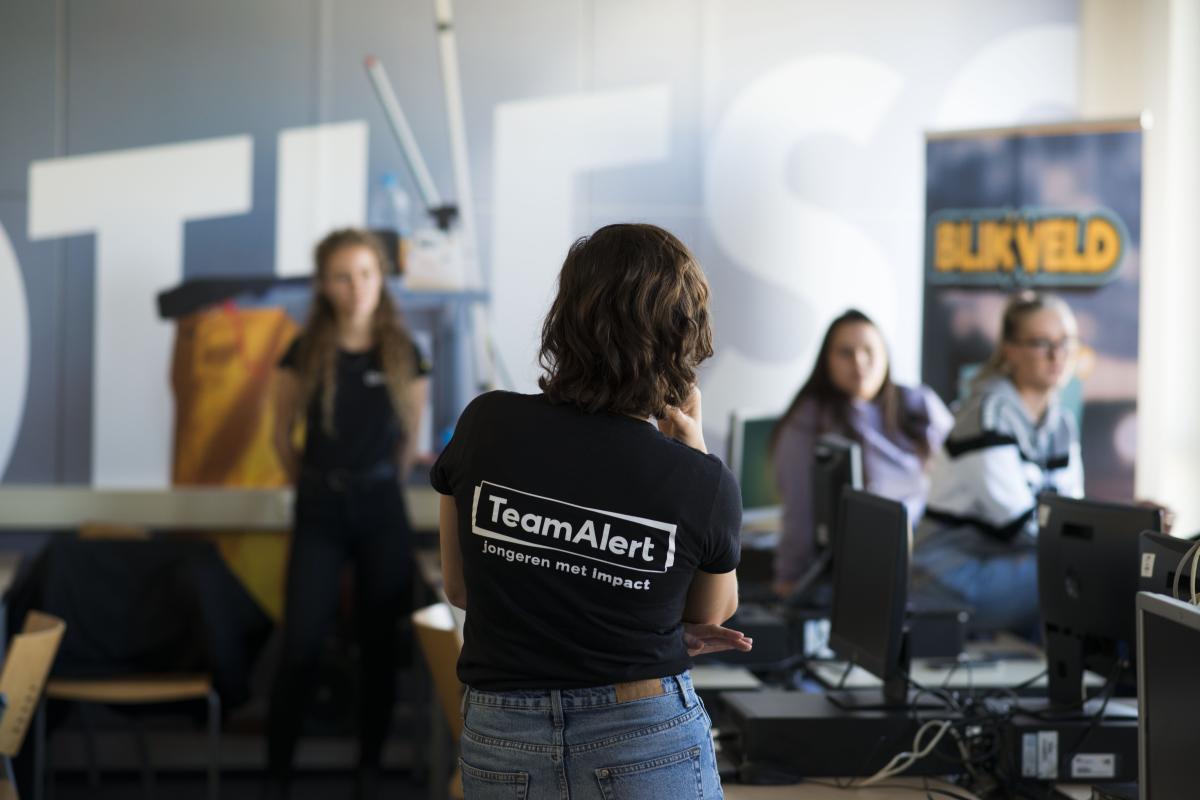Initiative details
Every year there are road casualties among young drivers. In the period of 2015 to 2019, 92 road deaths were registered annually in which a young driver was involved (in The Netherlands). The risk for novice drivers of being involved in a traffic accident is 4.5 times higher than for experienced car drivers. Of the 1 million novice drivers, half are between the ages of 16 and 24. Young people are especially vulnerable on the road, not only because of their ongoing physical and mental development (more attracted to danger, less self-control, peer influence and lower risk assessment) but also due to existing risks on the road.
Novice drivers are a risk group for two main reasons: their lack of driving experience and risky behavior that is characteristic of young people (in the form of speeding). Because of these challenges they misjudge traffic situations. However, this can be trained. TeamAlert developed an intervention including an online training, based on scientific research, targetting novice drivers.
Novice drivers are a risk group for two main reasons: their lack of driving experience and risky behavior that is characteristic of young people (in the form of speeding). Because of these challenges they misjudge traffic situations. However, this can be trained. TeamAlert developed an intervention including an online training, based on scientific research, targetting novice drivers.
Initiative date
Who was/is your target audience?
Young adults 17-25
Car drivers
Topic
Knowledge building and sharing
Create awareness
Education in school or in community organizations
Organisation details
TeamAlert
Association
Netherlands
Utrecht
Contact name
Suzanne van der Geest
Telephone number
0302232893
suzanne@teamalert.nl
Website
Project activities
If you work together with external partners, list the most important partners and briefly describe their role.
The training is developed in cooperation with SWOV (Stichting Wetenschappelijk Onderzoek Verkeersveiligheid) and based on previous research.
The training has also been adjusted, in cooperation with Takeaway, to a version aimed at e-bike riders.
The training has also been adjusted, in cooperation with Takeaway, to a version aimed at e-bike riders.
Please describe the project activities you carried/are carrying out and the time period over which these were implemented.
Blikveld is executed in different ways; at schools, online, on the street (places where there are many young people), at organizations (with delivery staff). The intervention itself consists of the following parts:
- Introduction and conversation: getting acquainted with the target group (young people at school, on the street or at work), coming into the context of the target group and sharing some facts about novice drivers.
- Knowledge quiz: testing and increasing the knowledge about novice drivers, (alternatives for) risk behavior and creating a positive attitude towards driving safely.
- Video training: in this training young people go through videos with potentially dangerous traffic situations. They assess the dangers and predict the outcome of these situations. After their own predictions and evaluations, an experienced driver shows how he predicts the situation and what the desired behavior is. Due to an active role of young people the training ensures attention, personal relevance and the opportunity for self-reflection.
- Debriefing: repeating what has been learned and experienced during this intervention and creating an intention towards driving safely.
- Introduction and conversation: getting acquainted with the target group (young people at school, on the street or at work), coming into the context of the target group and sharing some facts about novice drivers.
- Knowledge quiz: testing and increasing the knowledge about novice drivers, (alternatives for) risk behavior and creating a positive attitude towards driving safely.
- Video training: in this training young people go through videos with potentially dangerous traffic situations. They assess the dangers and predict the outcome of these situations. After their own predictions and evaluations, an experienced driver shows how he predicts the situation and what the desired behavior is. Due to an active role of young people the training ensures attention, personal relevance and the opportunity for self-reflection.
- Debriefing: repeating what has been learned and experienced during this intervention and creating an intention towards driving safely.
Evaluation
What has been the effect of the activities?
This year, SWOV is measuring the effects of the Blikveld intervention with a driving simulator and eyetracking. The study includes a pre-, post and a long term posttest with both an experimental and control group.
We expect the results at the end of 2022.
We expect the results at the end of 2022.
Please briefly explain why your initiative is a good example of improving road safety.
Blikveld actively trains hazard recognition for young drivers.
How have you shared information about your project and its results?
A brief description of this intervention can be found on the website of TeamAlert (https://teamalert.nl/zakelijk/thema-s/onervaren-verkeersdeelnemers/blikveld/). In addition, insights on novice drivers are summarized in a fact sheet (https://teamalert.nl/zakelijk/kenniscentrum/onervaren-verkeersdeelnemers/jongeren-als-beginnende-bestuurders/).
Supporting materials
